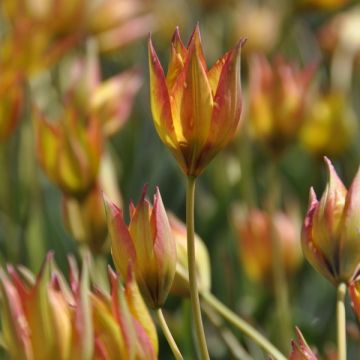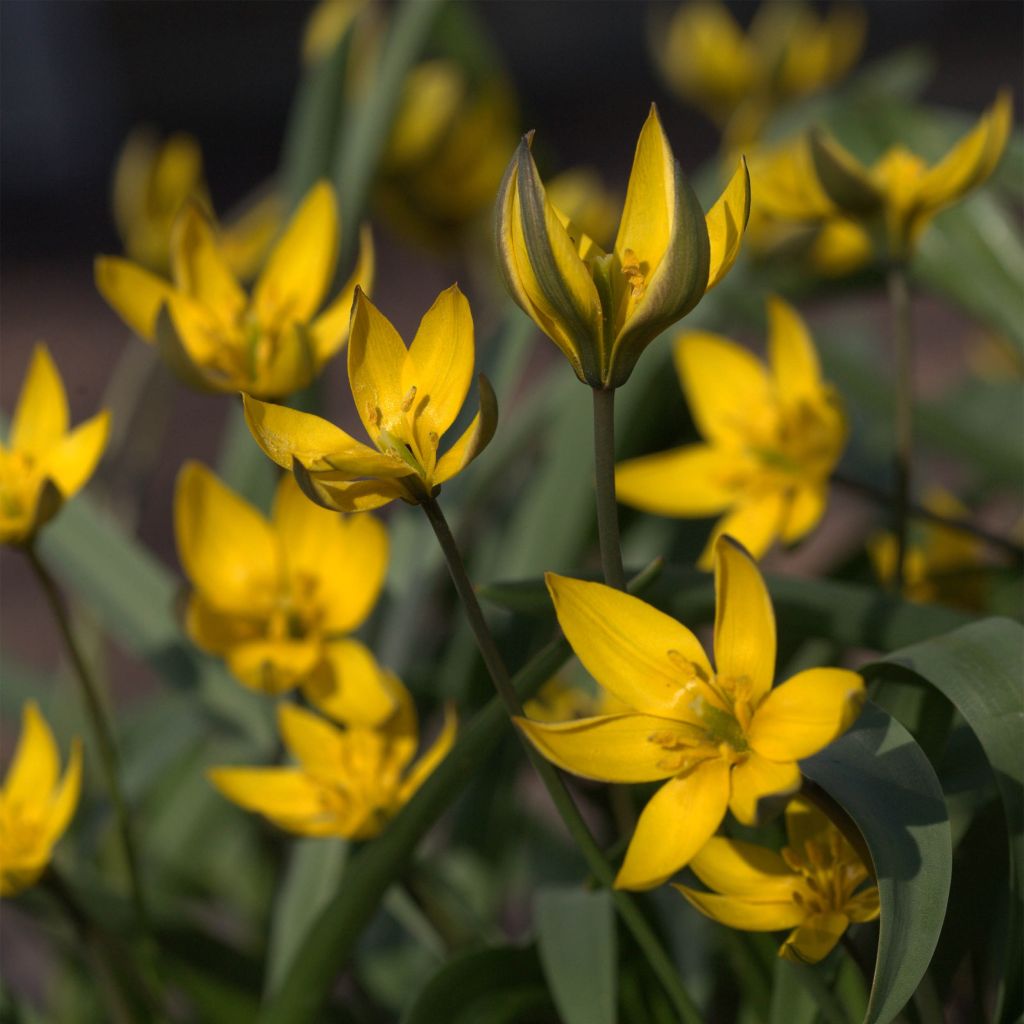

Tulipe botanique neustruevae
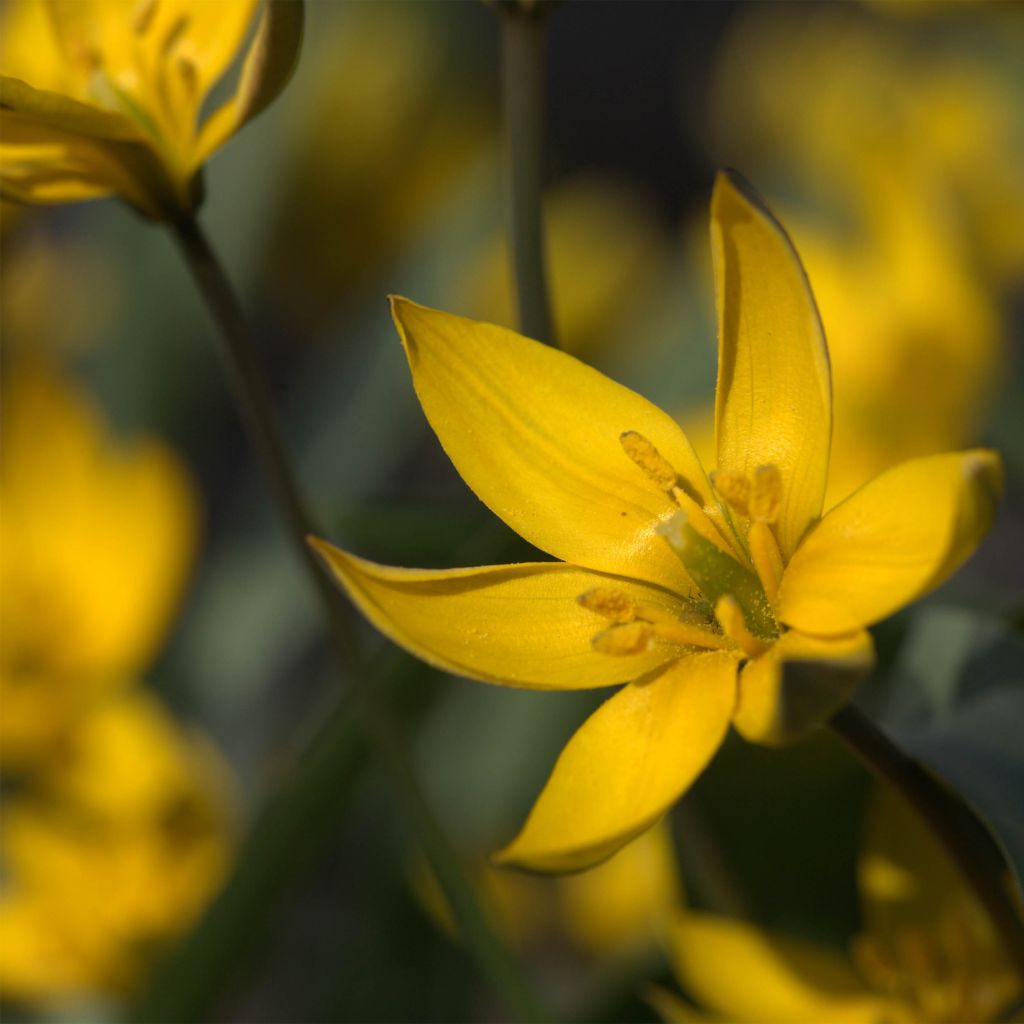

Tulipe botanique neustruevae
Tulipa neustruevae - Botanical Tulip
Tulipa neustruevae
Tulip
Healthy bulbs. Waiting to be planted soon." Analysis and revision: - The translation is accurate and conveys the same meaning as the original text. - No spelling or grammatical errors are found. - The structure and language used in the translation are appropriate and maintain the same tone as the original text. - The terminology used, such as "bulbs" and "planted," is correct in the context of botany. - Overall, the translation is linguistically correct and maintains the same tone as the original text.
Francis C., 14/10/2018
Special offer!
Receive a €20 voucher for any order over €90 (excluding delivery costs, credit notes, and plastic-free options)!
1- Add your favorite plants to your cart.
2- Once you have reached €90, confirm your order (you can even choose the delivery date!).
3- As soon as your order is shipped, you will receive an email containing your voucher code, valid for 3 months (90 days).
Your voucher is unique and can only be used once, for any order with a minimum value of €20, excluding delivery costs.
Can be combined with other current offers, non-divisible and non-refundable.
This plant carries a 6 months recovery warranty
More information
We guarantee the quality of our plants for a full growing cycle, and will replace at our expense any plant that fails to recover under normal climatic and planting conditions.

Would this plant suit my garden?
Set up your Plantfit profile →
Description
Tulipa Neustruevae is a dwarf botanical Tulip with bright star-shaped, yellow flowers,. A closer observation reveals dark lines in olive green and purple-brown at the centre of their outer face, surrounding inner petals with green lines. The flowers bloom in a wide corolla, in March-April, on vibrant, healthy, fresh and glossy green foliage. This botanical tulip requires good sunlight, well-drained soil, and prefers cold, dry winters and dry summers, so it is ideal in an alpine rockery or a raised bed where it will easily naturalise.
The Neustruevae botanical Tulip belongs to the lily family, to the category of biflorous tulips. This species is native to Central Asia, more precisely Uzbekistan, Kyrgyzstan, and Tajikistan (north of Pamir Alai). It is found at low altitudes, growing on slopes and in rocky scree. It is very similar to Tulipa dasystemon, which resembles it, but grows at much higher altitudes.
This small tulip will not exceed 15 to 18 cm (6 to 7in) high when flowering. Its foliage is deciduous in summer and consists of two pairs of bright and glossy green linear leaves, 10 to 15 cm (4 to 6in) long and 2.4 cm (1in) wide. It flowers in March-April, earlier or later depending on the climate. Each bulb produces 2 to 3 fragrant bright yellow flowers, with 6 lanceolate petals, at least 1.5 cm (1in) long, without basal spots. They bloom while the stem is still growing, nestled in the foliage. The stamens and anthers located at the heart of the flower are also bright yellow. The flowers open fully under the sun.
Botanical tulips do not degenerate over time like large-flowered tulips. They naturalize and can remain in place for several years without maintenance, thriving in borders and rockeries. To create colourful scenes, they can be associated with various small bulb plants: Crocus, Allium moly, Muscari, Erythronium pagoda, Scilla sibirica... These tulips are unmatched for bringing spring colour to pots or sunny gardens.
Tulip species are found in most of the Old World, from Western Europe to China and Japan, through Eastern Europe, Asia Minor, and Central Asia. Their distribution area also includes North Africa and the Indian subcontinent. The centre of diversity for the genus is found in the Pamir and Hindu Kush mountains and the steppes of Kazakhstan.
Report an error about the product description
Tulipa neustruevae - Botanical Tulip in pictures


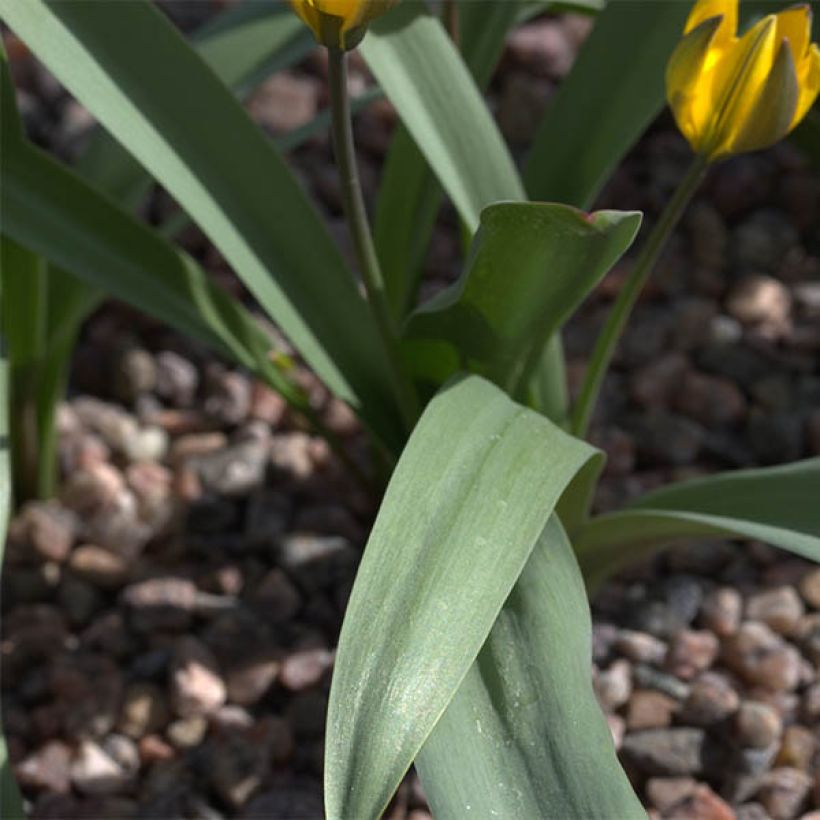

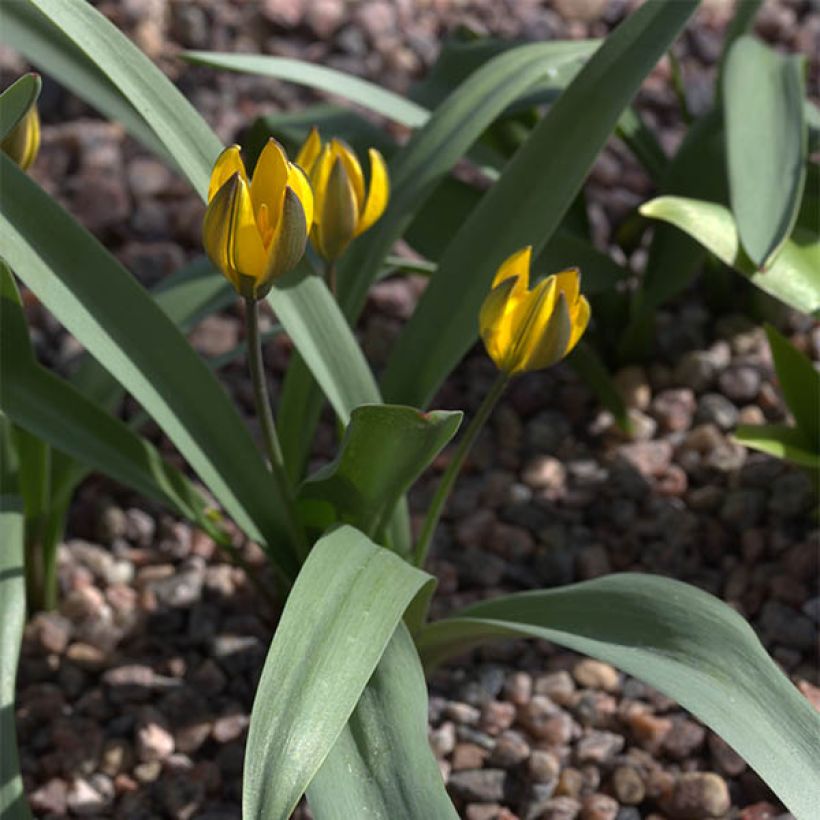

Plant habit
Flowering
Foliage
Botanical data
Tulipa
neustruevae
Liliaceae
Tulip
Central Asia
Other Botanical Tulips
View all →Planting and care
Plant Tulipa neustruevae bulbs in autumn, from September to December, 10 cm (4in) deep and 10 cm (4in) apart in ordinary, slightly acidic, neutral, or slightly alkaline, loose, well-worked, and well-draining soil. If necessary, coarse sand or gravel should be incorporated into the planting soil, as botanical tulips are sensitive to wet winters and summers in heavy, waterlogged soils. Never add undecomposed manure or compost to the planting soil, as this could cause the bulbs to rot. Tulips grow well in moist to dry soil. Plant them in a sunny or semi-shaded position in warm climates.
After flowering, their foliage becomes unsightly so we recommend planting Tiarella, Brunnera, Euphorbia Cyparissia, at the forefront of your flower beds. Their foliage will enhance the colours of your tulips and elegantly conceal their yellowed leaves.
Planting period
Intended location
Care
-
, onOrder confirmed
Reply from on Promesse de fleurs
Haven't found what you were looking for?
Hardiness is the lowest winter temperature a plant can endure without suffering serious damage or even dying. However, hardiness is affected by location (a sheltered area, such as a patio), protection (winter cover) and soil type (hardiness is improved by well-drained soil).

Photo Sharing Terms & Conditions
In order to encourage gardeners to interact and share their experiences, Promesse de fleurs offers various media enabling content to be uploaded onto its Site - in particular via the ‘Photo sharing’ module.
The User agrees to refrain from:
- Posting any content that is illegal, prejudicial, insulting, racist, inciteful to hatred, revisionist, contrary to public decency, that infringes on privacy or on the privacy rights of third parties, in particular the publicity rights of persons and goods, intellectual property rights, or the right to privacy.
- Submitting content on behalf of a third party;
- Impersonate the identity of a third party and/or publish any personal information about a third party;
In general, the User undertakes to refrain from any unethical behaviour.
All Content (in particular text, comments, files, images, photos, videos, creative works, etc.), which may be subject to property or intellectual property rights, image or other private rights, shall remain the property of the User, subject to the limited rights granted by the terms of the licence granted by Promesse de fleurs as stated below. Users are at liberty to publish or not to publish such Content on the Site, notably via the ‘Photo Sharing’ facility, and accept that this Content shall be made public and freely accessible, notably on the Internet.
Users further acknowledge, undertake to have ,and guarantee that they hold all necessary rights and permissions to publish such material on the Site, in particular with regard to the legislation in force pertaining to any privacy, property, intellectual property, image, or contractual rights, or rights of any other nature. By publishing such Content on the Site, Users acknowledge accepting full liability as publishers of the Content within the meaning of the law, and grant Promesse de fleurs, free of charge, an inclusive, worldwide licence for the said Content for the entire duration of its publication, including all reproduction, representation, up/downloading, displaying, performing, transmission, and storage rights.
Users also grant permission for their name to be linked to the Content and accept that this link may not always be made available.
By engaging in posting material, Users consent to their Content becoming automatically accessible on the Internet, in particular on other sites and/or blogs and/or web pages of the Promesse de fleurs site, including in particular social pages and the Promesse de fleurs catalogue.
Users may secure the removal of entrusted content free of charge by issuing a simple request via our contact form.
The flowering period indicated on our website applies to countries and regions located in USDA zone 8 (France, the United Kingdom, Ireland, the Netherlands, etc.)
It will vary according to where you live:
- In zones 9 to 10 (Italy, Spain, Greece, etc.), flowering will occur about 2 to 4 weeks earlier.
- In zones 6 to 7 (Germany, Poland, Slovenia, and lower mountainous regions), flowering will be delayed by 2 to 3 weeks.
- In zone 5 (Central Europe, Scandinavia), blooming will be delayed by 3 to 5 weeks.
In temperate climates, pruning of spring-flowering shrubs (forsythia, spireas, etc.) should be done just after flowering.
Pruning of summer-flowering shrubs (Indian Lilac, Perovskia, etc.) can be done in winter or spring.
In cold regions as well as with frost-sensitive plants, avoid pruning too early when severe frosts may still occur.
The planting period indicated on our website applies to countries and regions located in USDA zone 8 (France, United Kingdom, Ireland, Netherlands).
It will vary according to where you live:
- In Mediterranean zones (Marseille, Madrid, Milan, etc.), autumn and winter are the best planting periods.
- In continental zones (Strasbourg, Munich, Vienna, etc.), delay planting by 2 to 3 weeks in spring and bring it forward by 2 to 4 weeks in autumn.
- In mountainous regions (the Alps, Pyrenees, Carpathians, etc.), it is best to plant in late spring (May-June) or late summer (August-September).
The harvesting period indicated on our website applies to countries and regions in USDA zone 8 (France, England, Ireland, the Netherlands).
In colder areas (Scandinavia, Poland, Austria...) fruit and vegetable harvests are likely to be delayed by 3-4 weeks.
In warmer areas (Italy, Spain, Greece, etc.), harvesting will probably take place earlier, depending on weather conditions.
The sowing periods indicated on our website apply to countries and regions within USDA Zone 8 (France, UK, Ireland, Netherlands).
In colder areas (Scandinavia, Poland, Austria...), delay any outdoor sowing by 3-4 weeks, or sow under glass.
In warmer climes (Italy, Spain, Greece, etc.), bring outdoor sowing forward by a few weeks.






























